Since the advent of the biotechnology industry in the 1970s, the field has grown tremendously, fueling numerous advancements in medicine and health care. There are currently over 250 biotech products and vaccines offered today, and many of them are for diseases that were once untreatable. The demand for skilled and qualified individuals to join various companies and organizations in the booming field has soared.
But what exactly is biotechnology?

Biotechnology is "the use of biology to solve problems and make useful products," according to Encyclopedia Britannica. "The most prominent are of biotechnology is the production of therapeutic proteins and other drugs through genetic engineering.
At its core, biotechnology involves leveraging biological processes to improve quality of life, and the field has continually had huge impacts on the medicine and health care spaces. The biotech field has provided groundbreaking technologies for debilitating and rare diseases. In the 1980s, recombinant insulin was the first product created through genetic engineering to gain approval from the U.S. Food and Drug Administration. This allowed insulin to be produced in larger qualities at a lower cost, a significant advancement for individuals with diabetes who rely on synthetic human insulin daily. Gene therapy and the Human Genome Project has widely increased our understanding of normal and disease biology, which has equipped researchers to develop new medicines and treatments for previously untreatable diseases.
Modern biotech researchers explore the root causes of disease at the molecular level and produce therapeutic proteins that can aid the body’s natural response. They also develop traditional pharmaceuticals to halt the spread of disease by studying and analyzing genes, proteins and their related biological pathways, with the assistance of computer technology.
The COVID-19 pandemic has only highlighted the pressing need for biotechnology researchers, who are collaborating and racing to develop vaccines at a rapid pace worldwide. This latest life-threatening new infectious disease and its uncontained spread has illustrated the far-reaching impact of scientists and engineers who are committed to biotechnology and wielding its power for the common good.
Save this digital resource by submitting the form!
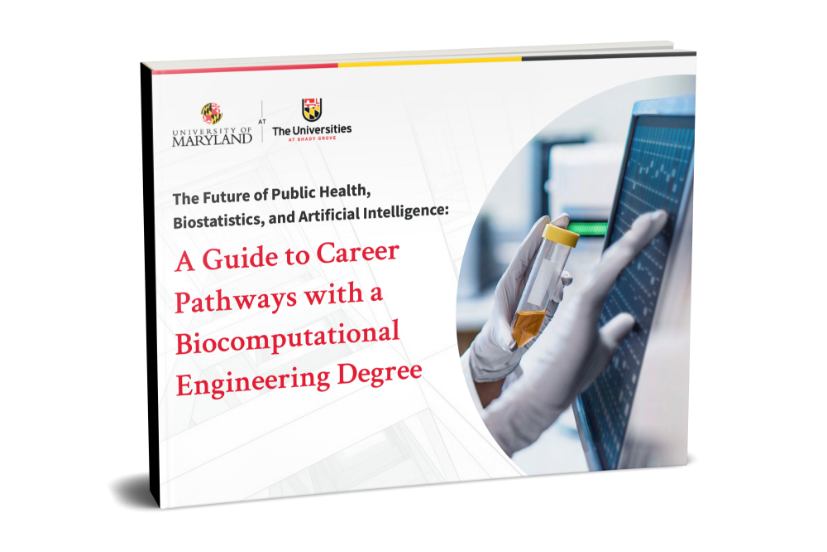
The biotech field is wide-encompassing, and intersects with various fields, including:
Public/global health - The biotech industry supports the treatment and eradication of global diseases. For instance, biotech researchers are on the front lines in the investigation of therapeutic drugs and vaccines for COVID-19.
Stem cell research - Stem cells can be used to regenerate diseased cells. Researchers grow the specific cell type, test the cells, and then conduct animal and human trials. Individuals with various conditions such as spinal cord injuries, Type 1 diabetes, Parkinson’s disease, and heart disease, among others, can benefit from stem cell therapies.
Health care technology - Utilizing artificial intelligence, blockchain, interoperability, and cloud technology, new resources can improve patient care and outcomes while streamlining processes and automating tasks.
Data science - Individuals in the biotech industry apply statistical analyses to molecular biology, including genomics and proteomics, and rely on a strong foundation in mathematics, statistics, and programming to carry out their research.
Biomedical engineering - Biomedical engineers lead innovation in the design of new health equipment and devices, including: imaging and diagnostic equipment, surgical tools, health monitoring equipment (from EKGs to wearables), artificial limbs, and organs and advanced prosthetics.
Computer science - Computer science is the study of computers and includes the foundations of programming and algorithms. Biotech researchers apply the principles of computer science and engineering to understand and analyze biological data.
Drug development - Researchers discover new drugs, test them, and conduct experiments to identify benefits, side effects, interactions with other treatments, and more. Computer modeling is a large component of drug discovery. For example, sophisticated computer models can be used to predict which chemical structures can bind to drug targets.
Data modeling - Biotechnology involves the analysis and manipulation of large data sets and data modeling is the process of evaluating which data will be stored and how.
Medical technology - This is a broad field that consists of all technological tools and devices that are used in prevention, diagnosis, monitoring, and treatment.
Health IT - Health Information Technology includes computer hardware, software, or infrastructure that is used to store or retrieve clinical information, such as electronic health records.
Biostatistics - Biostatisticians apply statistical methods to interpret data in the areas of biology and public health. Their interpretations could determine the safety and efficacy of a drug based on data from a trial. Or they could predict the spread of an epidemic. The expertise of biostatisticians is also required in planning drug/vaccine trials or trials for medical equipment.
The DC, Maryland and Virginia metropolitan area is at the forefront of emerging technologies and innovation in the life sciences sector, serving as a hub for biotech, biomedical, and pharmaceutical research.
Maryland alone is home to 500+ biotech firms and 2,700 life sciences organizations. Serving as headquarters for the National Institutes of Health, the FDA, and the National Institute of Standards and Technology, the area is anchored by many government resources. In addition, several companies and firms like AstraZeneca, GlaxoSmithKline (GSK), Kite Pharma, ACell, and Novavax have a presence in the area. Emergent Biosolutions has vaccine manufacturing plants in Baltimore, Precigen has a facility in Germantown, and GlaxoSmithKline has a vaccine research and development center in Rockville.
In 2018, the BioHealth Capital Region was ranked fourth in GEN’s list of Top 10 U.S. Biopharma Clusters. The area is third in NIH funding with awards totaling $1.5 billion, anchored by the University System of Maryland and Johns Hopkins University. It is also third in patents and fourth in lab space.
Several scientific breakthroughs were made in Maryland, including the first mapping of the human genome, the first rapid test for Ebola, and the first FDA-approved blood test for colon cancer. In March of 2020, 17 Maryland biotech companies joined forces to find new vaccines and therapeutics for COVID-19. The companies include Pfizer, GSK, Novavax, and Emergent Biosolutions.
The growth of the biotech industry, especially in the BioHealth Capital Region, propels a demand for skilled engineers, especially those with a strong foundation in physical and biological sciences and computation and data science.
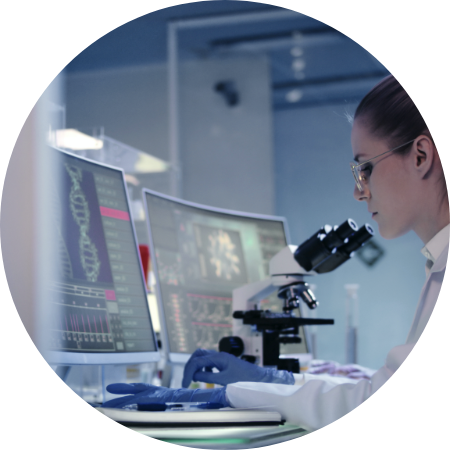
While chemotherapy and radiotherapy are popular and effective cancer treatments, biotechnology companies have focused on developing targeted therapies and personalized treatments. These acknowledge and take into account that a patient’s genetics can play a role in how they respond to certain medicines or cancer drugs. Biotechnology professionals are also at the forefront of accelerating research that can slow or cure cancers. In Maryland, A&G Pharmaceutical has identified a specific biomarker that can detect more than 80% of breast cancers and is creating test kits for early detection.
“We have yet to realize the full potential of precision medicine, but we are making significant headway…Options for many people with cancer have dramatically improved through targeted therapies that reverse the effects of specific gene mutations in their tumor cells.” - Eva Kiesler, former Senior Science Editor at Memorial Sloan-Kettering Cancer Center and Meredith Begley, Health and Medical writer at Memorial Sloan-Kettering Cancer Center
Biostatisticians play a significant role in solving research questions by collecting, analyzing, processing, and interpreting massive data sets. They also help to design clinical trials to ensure that the results are meaningful. Clinical trials, public health programs, epidemiological studies, survival rates, evidence-based medicine, and genome sequencing data analysis all depend on biostatistics, which is the application of statistics to biology. In response to the COVID-19 pandemic, statistics experts at Stanford have been using their expertise to fight the outbreak, by tracking genetic mutations, developing new approaches to predictive models, and designing new clinical trials.
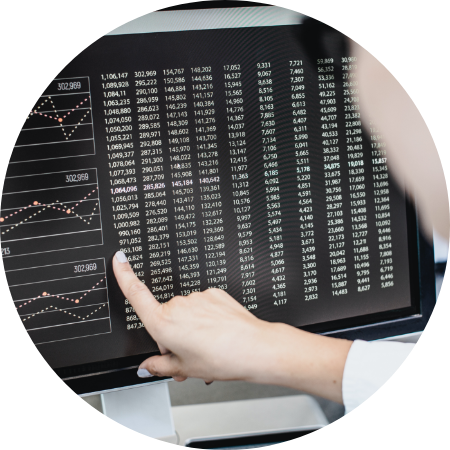
“Cleaning and processing data remains one of the largest open challenges for biostatistics and data science. As we examine electronic health records and data from wearable computing, the modeling of longitudinal and survival data have never been more important or more difficult. Biostatisticians are also central to many of the most important scientific problems of our time: reproducibility and replicability, the appropriate use of screening tests, the health impacts of climate change, and the importance of methods and software in scientific research.”- Dr. Dimitris Rizopoulos, professor at Erasmus University Medical Center, and Dr. Jeff Leek, professor at the Johns Hopkins Bloomberg School of Health
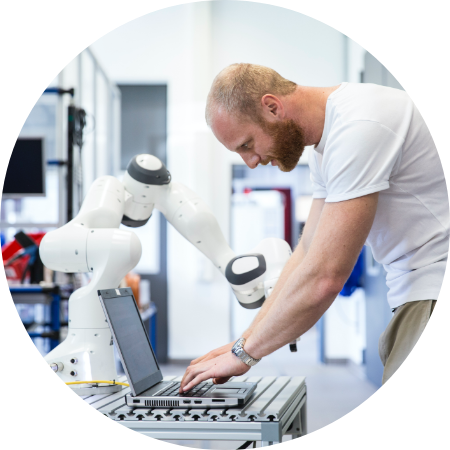
Machine learning tools that use artificial neural networks can leverage millions of medical reports, clinical trials, and medical journals in a sophisticated fashion that is simply not possible for a human. The term “artificial intelligence” first came about more than 60 years ago and its application has expanded dramatically in health care since then. For example, virtual assistants like the Amazon Echo Dot can aid people with Alzheimer’s disease by giving them reminders about meals and medication. In addition, dermatologists can use algorithms to identify and diagnose skin cancers such as melanoma with the help of MelaFind technology, which uses infrared light to evaluate moles. In the future, it is expected that all medical imaging modalities will use machine learning to draw better conclusions from images than humans are able to.
“We’re able to train machines to exhibit humanlike intelligence and apply that in a clinical setting. We haven’t achieved human intelligence, but we’re getting close to it.”- Dr. Paul Weber, associate dean for continuing medical education at Rutgers’s Robert Wood Johnson and New Jersey medical schools.
To tackle today’s most pressing public health challenges, there is a great need for individuals with the ability to apply computer programming knowledge to analyze biological data sets and create new diagnostic technologies for the treatment and prevention of disease.
Below are some examples of ways you can make an impact by choosing one of the many career paths available in this industry:

Biocomputational engineering is an emerging field that fuses bioengineering — a discipline grounded in the fundamentals of physics, chemistry, and biology — with computation and data science. This new degree is a more specific and targeted degree than a bioengineering program because it offers a strong, multidisciplinary curriculum that includes statistics, data analysis, data visualization, machine learning, programming, and more.


Machine learning tools that use artificial neural networks can leverage millions of medical reports, clinical trials, and medical journals in a sophisticated fashion that is simply not possible for a human. The term “artificial intelligence” first came about more than 60 years ago and its application has expanded dramatically in health care since then. For example, virtual assistants like the Amazon Echo Dot can aid people with Alzheimer’s disease by giving them reminders about meals and medication. In addition, dermatologists can use algorithms to identify and diagnose skin cancers such as melanoma with the help of MelaFind technology, which uses infrared light to evaluate moles. In the future, it is expected that all medical imaging modalities will use machine learning to draw better conclusions from images than humans are able to.
Multiple disciplines fit into the biocomputational engineering degree, including the following four areas:
Programming & Computer Science
Fundamentals of programming, algorithms, and simulation as well as data analysis and visualization make up a critical component of the degree.
Machine Learning/Artificial intelligence
Artificial intelligence methods are used for mining big data sets and for making decisions using data sets.
Biotechnology & Health IT
Analyzing thermal and mechanical properties of devices or systems is a core competency and students will be well-versed specifically on the biomechanics of biomedical devices.
Life Science Technology
The concepts of synthetic biology and biological engineering serve as a bedrock of the biocomputational engineering degree. Wet lab experiments allow students to observe cellular and molecular processes and phenomena.
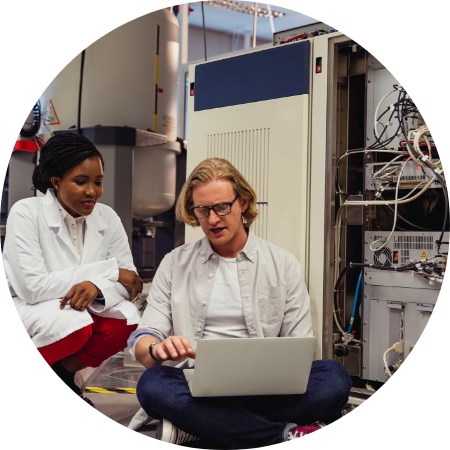
One of the first degrees of its kind, the University of Maryland’s new bachelor of science in biocomputational engineering combines biology with data science to equip and empower students to make an impact in the biotech industry. In fact, it was designed specifically to address the soaring need for engineers with expertise in the life sciences and in computational methods, especially in the areas of biotechnology, pharmaceuticals, biomedical devices, telemedicine, and electronic medical records.
Through UMD’s program in biocomputational engineering, students are given the skills and experience they need across a range of disciplines to be able to tackle today’s biggest challenges in public health.

“For someone with computational skills and a systems mindset, BCE is an opportunity to marry the two sciences of data science and engineering. A lot of this (BCE) world is IT integration within hospital informatics systems. There is an obvious, evolving need for this field in hospitals.”- John Page, Vice president of Engineering at BD Integrated Diagnostic Solutions and UMD Bioengineering Advisory Board Member
This unique program is held at the state-of-the-art Biomedical Sciences and Engineering (BSE) education facility at the Universities at Shady Grove. The program, which is geared toward transfer students from community colleges or four-year institutions, offers junior- and senior-level courses at the new BSE education facility. The building opened in 2019 and was sustainably designed and built and certified as LEED-NC Platinum, the highest rating for sustainability by the U.S. Green Building Council.
The six-level, 220,000-square-foot facility features teaching laboratories, a clinical training facility, a product design laboratory, active learning classrooms, lecture halls, and an innovation and entrepreneurship center.
Below are some of the courses (a total of 60 credits) in UMD’s strategic, multidisciplinary curriculum, taught by full-time professors with backgrounds in computational biology, biotechnology, and data science:
.png?width=450&name=SMS06885%20(2).png)

Graduates of this program will receive a B.S. degree in biocomputational engineering from the University of Maryland, College Park, and will graduate with the ability to:
Graduates will also possess the following in-demand skills:
The biocomputational engineering degree was created and designed as a direct response to the growing demand for qualified engineers with skills and knowledge bases in the life sciences as well as computer programming. Courses for the degree program will be taught at the new Biomedical Sciences and Engineering (BSE) education facility at the Universities at Shady Grove, conveniently located in Rockville, MD.
The Shady Grove campus also offers a full range of student services including academic coaching, career advising, and leadership training. There are a variety of ways for students to become involved and to meet each other, including numerous student organizations and campus-wide events. Students can receive financial aid counseling and scholarship help by making an appointment at the Center for Student Engagement & Financial Resources. They also have access to free counseling services through the Center for Counseling and Consultation as well as study rooms and research assistance at the Priddy Library.
Montgomery County, “the economic engine” of Maryland, is experiencing a strong demand for innovators and visionaries in the Science, Technology, Engineering, Mathematics, and Medical (STEMM) fields. The innovative BSE building on the Shady Grove campus offers an environment packed with spaces for collaboration, research, and entrepreneurship that is built for STEMM breakthroughs.


Programs delivering coursework at the location, including UMD’s biocomputational engineering degree, will produce forward-thinking researchers and changemakers to meet the state’s escalating projected job growth in bioscience.
Below are some of the most notable aspects of the BSE facility at the Universities at Shady Grove:
Dr. Ian White is the Associate Chair and Director of Undergraduate Studies at the Fischell Department of Bioengineering at the University of Maryland (UMD). We interviewed Dr. White about the demand for a biocomputational engineering degree and about the ways the program prepares students to serve as leaders in the biotech field.

I have directed the undergraduate degree in bioengineering at UMD for about the last five years. I constantly hear from our graduates that they feel passionate about their bioengineering degree but that they believe that they’d have many more career opportunities if they had skill depth in programming and data sciences. At the same time, I have heard from employers that there are many career opportunities available at biotechnology companies for students with training in programming and data sciences. Some of the bioengineering students have completed a minor in computer science, but this can be cumbersome. We believe that we have created a degree that combines the necessary fundamentals in bioengineering and biotechnology with the skills in programming and data science that will provide graduates with a significant competitive advantage.
To start, the program is grounded in fundamentals of both engineering and biology. This means that all graduates will inherently be quantitative problems solvers with a complementary knowledge of cellular and molecular biology. Adding to this, the program teaches skills in programming, statistics, data analysis, and machine learning. This positions graduates as ideal candidates to solve problems important in medicine. While graduates will have the skills to take any programming or data science job, they will be ideal candidates for biotech firms and consulting firms who need problem solvers with knowledge of biology/medicine and skills to analyze large and complex data sets.
As with any engineering degree, the biggest asset that our graduates can boast is a talent for quantitative problem solving. In my opinion, this skill is the most prominent characteristic of an engineering graduate, and separates our graduates from those who may have focused only on biology, biotechnology, or programming. Beyond quantitative problem solving, our graduates will have a unique combination of fundamental knowledge in biology with basic skills in programming and data science. As compared to graduates who have a degree in bioengineering or biomedical engineering, our graduates will be skilled in programming and data science and thus can get to work solving medical problems with complex data sets. At the same time, as compared to students with degrees in computer science, our graduates will have the fundamental biology/biotechnology knowledge to apply their programming and data science skills to solve problems that impact health care and medicine.
The uniqueness lies in this combination of engineering, biology/biotechnology, and data science. Graduates will have the necessary skills to solve complex problems and will have the fundamental knowledge to understand the intricacies of the problems that they are solving.
Herein lies what we are most excited about. Graduates from our program will have the opportunity to immediately impact human health. Today more than ever our world is in need of new therapies — for cancer, neurodegenerative diseases, cardiovascular diseases, and newly emerging infectious diseases. Moreover, the importance of rapid vaccine development is more clear than ever. Solving these problems requires computer modeling, bioinformatics, analysis of large and complex data sets, and many other important computational skills. Fortunately for our graduates, the Universities at Shady Grove campus is located in the midst of one of the hottest geographical regions for therapeutics development in the world.
Nearly every field is enhanced by leveraging data science. This is true for biotechnology and medicine as well. These companies are learning new ways to utilize computer modeling and machine learning to improve what they do. Our graduates will be prepared to step into this rapid evolution. To continue to adapt to the needs of the local industry, we are establishing partnerships between our program and companies that would hire our graduates. In particular, our partners would assist us in designing the projects that the students work on in their courses.
Students who enjoy working with computers or programming and who are passionate about applying their talents to improve human health are ideal for the program. Similarly, students who find that they are good at math and want to apply these skills to solve important problems will do very well in and beyond the program. At the same time, students who resonate with biology but are interested in learning how to use programming to solve today’s complex problems in biology are also great candidates for the program.
My role is to direct the bioengineering degree at UMD as well as the biocomputational engineering degree. The instructors in the program will be full time teachers in the program and will have backgrounds in computational biology, biotechnology, and data science. They will all be trained in modern instructional techniques that promote active learning and inquiry-based learning in the classroom, and they will prioritize student outcomes and student success above anything else.
I earned all of my degrees in electrical engineering and started my career in the telecommunications field in the early 2000s. While pursuing my degree, the technical aspects of the work (electronics, fiber optics, programming, modeling) kept me motivated, but after entering the workforce, I was lacking in the necessary passion to excel. After some soul searching, I decided that applying my skill set to improving health care would ignite the passion that I was looking for. In particular, I found that I could apply my skill set to developing rapid diagnostics that can improve health outcomes. I left the telecommunications field in 2005 to pursue a postdoctoral training opportunity in biomedical engineering. Following this, I was fortunate to obtain a faculty position in the Fischell Department of Bioengineering at UMD to establish a research group that aims to address the challenges in the field of disease diagnostics.
I lead the amplified molecular sensors laboratory at UMD. We aim to overcome the challenges that are preventing the realization of the next generation of diagnostic systems. In particular, we emphasize the development and application of novel amplification strategies to add orders of magnitude improvement to chemical and biomolecular sensing, while at the same time improving the simplicity and usability of sensors and diagnostic systems. Our research has applications in identifying new ways to diagnose cancer, as well as rapid and low-cost methods to diagnose viral infections and antimicrobial-resistant bacterial infections. To date, our most successful invention has been a paper-strip-based chemical and biological sensor that is not only easier to use than its commercial competitors, but it’s also orders of magnitude cheaper than the previous commercial solution while maintaining the same performance. Seeing the commercialization of this technology has been one of the most rewarding experiences for our group members.
My advice to any student deciding what path to pursue is to choose the path that combines their skills and their passion for improving their world around them. When you are passionate about the problems that you are solving in life, going to work is rewarding. This leads to success and pride at work as well as self-esteem and happiness beyond the workplace.
Any student looking to transfer to UMD’s biocomputational engineering program must complete the prerequisite math/science courses and lower-level General Education requirements (or an associate’s degree) and a total of 60 credits.
| University of Maryland Course* | Credits | Montgomery College | Howard Community College | Frederick Community College | Prince George's Community College |
| Academic Writing (ENGL101) | 3 | ENGL102 | ENGL121 | ENGL101 | EGL1010 |
| Calculus I (MATH140) | 4 | MATH181 | MATH181 | MATH185 | MAT2410 |
| Calculus II (MATH141) | 4 | MATH182 | MATH182 | MATH195 | MAT2420 |
| Calculus III (MATH241) | 4 | MATH280 | MATH240 | MATH285 | MAT2430 |
| Differential Equations for Scientists and Engineering (MATH246) | 3 | MATH282 | MATH260 | MATH275 | MAT2460 |
| General Physics: Mechanics and Particle Dynamics (PHYS161) | 3 | PHYS161 | PHYS110 | PHYS151 | PHYS1030 |
| General Physics: Vibration, Waves, Heat, Electricity and Magnetism/Lab (PHYS260/261) | 4 | PHYS262 | PHYS111 | PHYS252 | PHYS2030 |
| Introduction to Engineering Design (ENES100) | 3 | ENES100 | ENES100 | ENGR100 | EGR1010 |
| General Chemistry for Engineers/Lab or General Chemistry and Energetics (CHEM135/136 or CHEM271/272) | 4 | CHEM132 | CHEM135 or CHEM102 | CHEM102 | CHM2000 or CHM1020 |
| Principles of Molecular & Cellular Biology or Biology for Engineers (BSC1170 or BIOE120) | 3 | BIOL150 or ENES120 | BIOL141 or BIOL120 | BSCI150 | BIO1140 |
| Matlab programming course (BIOE241 or equivalent) |
3 | ENES240 or equivalent | ENES271 | MATH220 and CMIS105 | EGR1140 |
| UMD General Education requirements or Associate’s Degree
|
22 | Completion of Associate's Degree requirements. See community college suggested transfer pathway or contact your community advisor. | |||
| TOTAL TRANSFER CREDITS | 60 | ||||
Don't miss our stories, research, and insights for tomorrow’s biotech professionals—subscribe for email notifications.





.png?width=184&name=sample2-large%20(1).png)
We’ve outlined several of our most frequently asked questions to help guide your decision-making process as you consider the University of Maryland’s B.S. in Biocomputational Engineering.
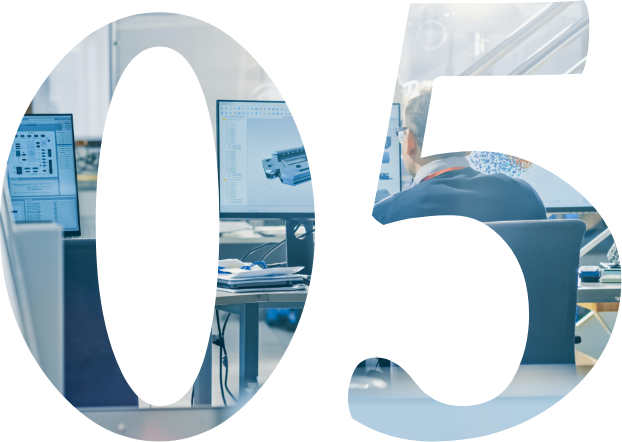
The courses in the biocomputational engineering program, which are all junior- and senior-level courses, are held at the new, state-of-the-art Biomedical Sciences and Engineering (BSE) education facility at the Universities at Shady Grove in Rockville, MD.
Before being admitted to the biocomputational engineering program, you must complete prerequisite math/science courses, lower-level General Education requirements (or an associate’s degree), and 60 total credits. Students can apply as transfer students from community colleges or four-year institutions. For more information, visit the program’s Admissions page.
The A. James Clark School of Engineering offers engineering scholarships to talented undergraduates, including transfer students. Students may also apply for federal financial aid, national scholarships, and university scholarships. For more information, visit the School of Engineering Admissions & Financial Aid page or the Universities at Shady Grove Admissions & Aid page.
Due to a strong foundational knowledge of biology and medicine as well as data science and computation, graduates will be uniquely positioned as ideal candidates for biotech firms and consulting firms. They will be highly qualified for meaningful and fulfilling career opportunities in the emerging biopharma, biotech, and biomedical industries, especially in Maryland and throughout the mid-Atlantic region.
Absolutely. The biotech industry is a huge and growing industry actively seeking new experts with skills in biology and data science. The COVID-19 pandemic has also shed light on the ever-increasing demand for researchers and engineers to devote their time toward the study and prevention of new infectious diseases.
The instructors are full-time UMD professors with backgrounds in computational biology, biotechnology, and data science. They are trained in modern instructional techniques that promote active learning and inquiry-based learning in the classroom.
You are welcome to reach out to our program coordinator, who would be happy to answer your questions. You can contact Ariana Parra, Biocomputational Engineering Program Representative, at biocomp@umd.edu or you can book a meeting with her.
UMD’s new Biocomputational Engineering degree is a unique program that is one of the first of its kind. By incorporating both the principles of biology and data science, the program prepares students with versatile, in-demand skills so they can solve the world’s biggest health care challenges. If you are eager to become a changemaker in the biotech field, we invite you to connect with us to find out how you can make a difference.
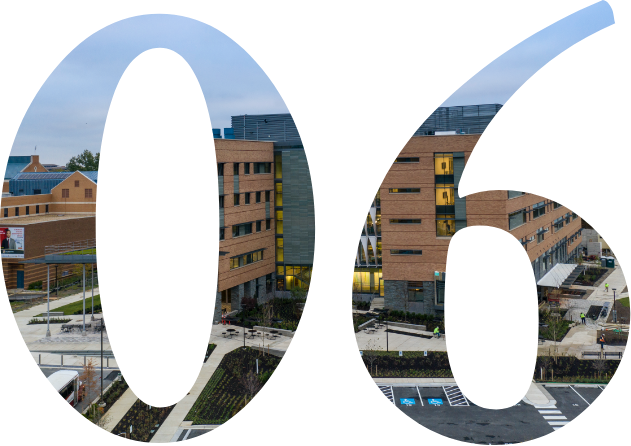
Save this digital resource by submitting the form!

“This is a very exciting program and a must for the future of bioscience and bioengineering. Biocomputational engineers are urgently needed where health care is headed. Approximately 20% of the U.S. GDP is spent on health care. Quantitative approaches are desperately needed to improve efficacy and lower cost.”- Naresh Menon, Founder of ChromoLogic, LLC and UMD Fischell Department of Bioengineering Advisory Board Member
You've already got a passion for computers, biology, and solving problems. Now, you're ready to use those interests for the advancement of science, health care, and the greater good. Learn more about the new Biocomputational Engineering degree at the intersection of technology and life science.